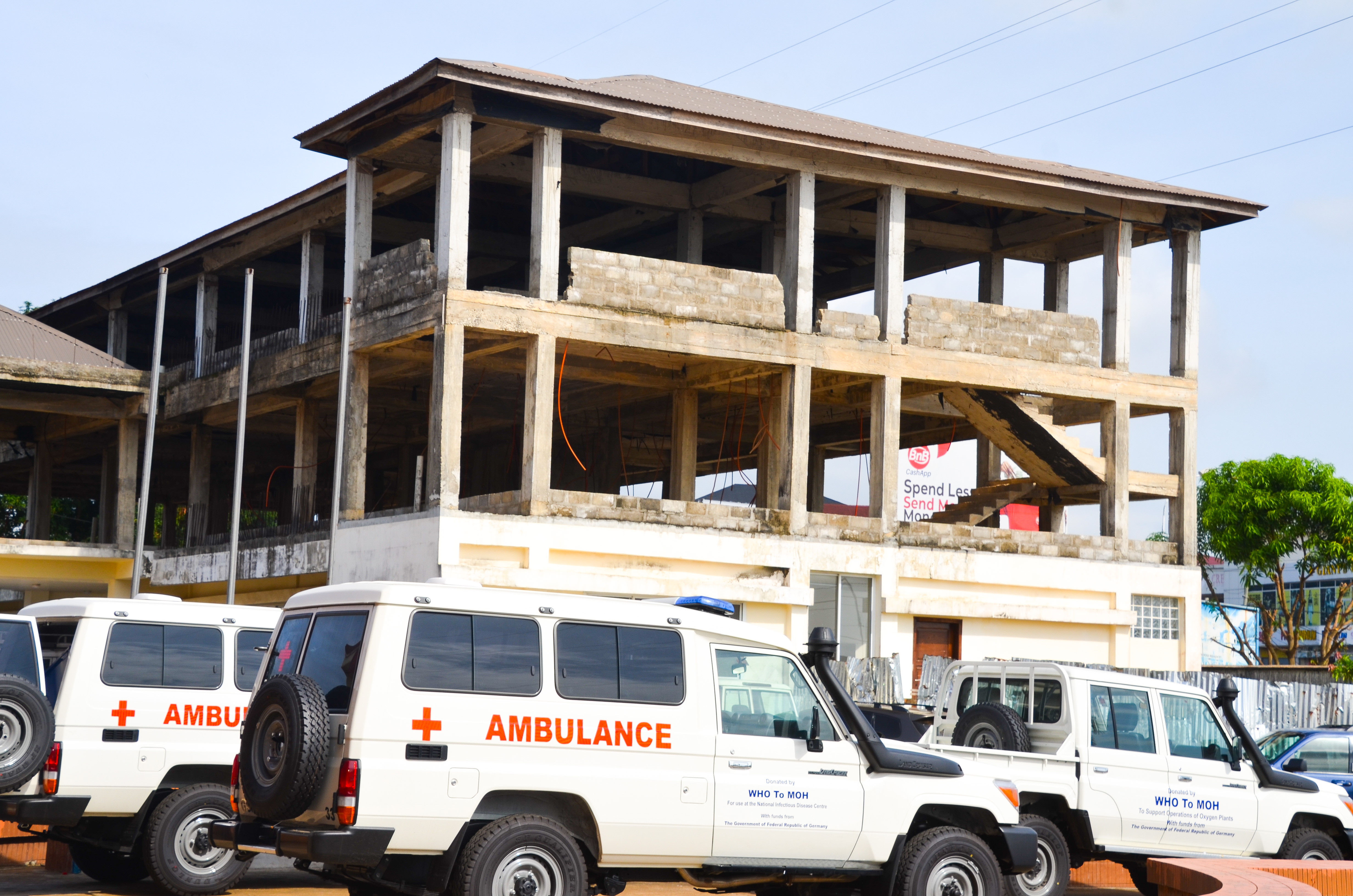REPORT 2022 - 2023
Epigraph:
Author:
- Home
- Executive overview
- Working together
- Impact on the Ground
WHO Region:Country, Territory or Area:Filter search results




- Countries enabled to provide high-quality, people-centred health services, based on primary health care strategies and comprehensive essential service packages
Scaling up Liberia’s medical oxygen production capacity to save lives
How did Liberia, with the support of WHO, achieve this?
Located at Star Base on Bushrod Island (Montserrado County) and Liberia Government Hospital in Tubmanburg (Bomi County), these plants complement three existing functional on-site oxygen plants in Liberia, of which only one supplies oxygen to other health facilities. Installation spanned approximately nine months, from February to November 2022. The new PSA oxygen plants produce medical oxygen 93%±3 from ambient air and are set up to refill cylinders for distribution to other health facilities across five counties (including Gbarpolu, Grand Cape Mount, and Margibi), serving a population of approximately 2.3 million people. The Star Base and Tubmanburg plants can produce up to 50 Nm3/hr or 680,000 L/day (~100 medium ‘J’ size cylinders/day) and 9 Nm3/hr or 136,000 L/day (~20 medium ‘J’ size cylinders/day) of medical grade oxygen, respectively. The Star Base plant is the largest oxygen plant in Liberia. From April 2023 to February 2024, the new plants produced and distributed a total of 3771 oxygen cylinders, delivering crucial support to over 2000 critically-ill patients in three major hospitals (Redemption Hospital, John F. Kennedy Referral Hospital, and Liberia Government Hospital).
Recognizing the critical need for improved access to medical oxygen in Liberia, WHO stepped in to provide extensive support to the Government of Liberia through the Ministry of Health in various areas, including a needs assessment, capacity building, resource mobilization, and infrastructure development. WHO played a key role in evaluating the capacities of healthcare facilities, estimating the country's overall oxygen demand, and developing a strategic plan to address these needs. This included supporting the development of a national oxygen policy and a costed roadmap, ensuring a comprehensive and sustainable approach. Additionally, WHO supported the development of essential resources such as guidelines, Standard Operating Procedures (SOPs), and tools to guide the production and distribution of medical oxygen within healthcare settings.
Recognizing the importance of reliable and uninterrupted power supply as a critical component for oxygen production, WHO procured and installed backup generators for the PSA plants, supplied diesel fuel for the operation of the generators, and facilitated the connection of the Star Base plant to the national grid to further enhance its reliability.
To ensure proper utilization and maintenance of the oxygen infrastructure, WHO provided comprehensive training programs. Over 200 frontline clinicians received training on oxygen therapy, while 20 biomedical engineering technicians gained expertise in the safe operation and maintenance of the oxygen plants. Additionally, a dedicated training center was established at the Star Base plant for ongoing capacity building.

WHO donated a Land Cruiser pickup to support oxygen plant operations, along with two ambulances for use at the National Infectious Disease Center, reinforcing emergency care in Liberia.
Photo credit: WHO Liberia
Securing the facilities was an important aspect in safeguarding the oxygen plants; therefore, WHO supported infrastructural improvements. These included constructing and renovating shelters for the plants and generators, along with perimeter fences, to enhance overall security. To facilitate and address oxygen distribution challenges, with support from the German government, WHO donated a vehicle for the efficient distribution of filled oxygen cylinders to county referral hospitals.
All these achievements were made possible with financial support from the governments of Canada, Germany, and the United States of America, demonstrating a collaborative commitment to improving healthcare access in Liberia.
Through these multifaceted interventions, WHO has played a pivotal role in strengthening Liberia's medical oxygen infrastructure and ensuring its accessibility to those in need, paving a way for a more resilient and sustainable healthcare system in the country.
“As we all say, water is life, but I will say oxygen is life because when you need oxygen and it is not there-then you are no more. This [Star Base] plant is the largest in the country and will serve almost two million people given its production capacity."
-Dr Wilhelmina Jallah, Minister of Health, Liberia
The initiative to enhance medical oxygen production capacity in Liberia represents a major milestone in fortifying the country's health system, ensuring improved access to life-saving medical resources. The Ministry of Health, backed by financial support from the World Bank and UNICEF, is actively expanding its efforts to install medical oxygen plants in 10 additional counties across the country. This initiative is strengthening the overall resilience and preparedness of Liberia's healthcare infrastructure to meet the country’s medical oxygen needs.
References
- World Health Organization Model List of Essential Medicines – 22nd List, 2021. Geneva: World Health Organization; 2021. WHO Model List of Essential Medicines – 22nd List, 2021, accessed 8 December 2023.
- Ministry of Health, Republic of Liberia. Liberia Oxygen Assessment, January 2021. Liberia Oxygen Assessment Report, accessed 10 December 2023.
- Ministry of Health, Republic of Liberia. National Roadmap to Increase Access to Medical Oxygen in Liberia. 2021-2024. National Roadmap to Increase Access to Medical Oxygen in Liberia, accessed 10 December 2023.
- Countries enabled to provide high-quality, people-centred health services, based on primary health care strategies and comprehensive essential service packages
